My father introduced my husband and I to sea kayaking while we were living aboard our sailboat in Everett Marina. We met at nearby Silver Lake to try out his Easy Rider kayak, bringing our sailing dinghy along for fun. A few years earlier, I’d taken a two-week canoe trip through the Bowron Lakes in British Columbia for college PE (physical education) credit. What a spectacular summer! My younger brother worked for a few years at Eddyline kayaks about the same time, so two members of my family owned these unique boats. Soon after our first paddle in a kayak, I began taking classes at a local university for my master’s degree in teaching. There I met a gal who led kayak tours with her husband in the San Juan Islands. It turned out they were leading the very group my father invited us to join that summer—a circumnavigation around Lopez Island.
Photo credit: Washington State Dept. of Ecology
Paddling to Doe Island from Anacortes in a small boat across Rosario Strait takes a bit of planning in regard to wind, tidal currents, and boat traffic, but this pleasant Washington State Marine Park can be reached in a day. Another option is to launch from Doe Bay on Orcas Island in your own kayak or tour with a group. Nestled along the southeastern shore of Orcas Island between Buoy Bay and Doe Bay, visitors can view snow-capped Mt. Baker rising above emerald green Cypress Island with tiny Strawberry Island in the foreground across Rosario Strait. In fact, Strawberry Island is perfect for a lunch stop. Unfortunately, overnight camping is no longer permitted due to budget cuts in 2010 at the Washington Department of Natural Resources.
Photo credit: Washington State Parks
Besides a tent, sleeping bag, and cooking gear, why not string a hammock between trees for an afternoon of relaxation? One of 21 marine parks only accessible by boat in Washington, tranquil Doe Island is home to five primitive campsites, complete with picnic tables and fire pits. If available, camp at the western-most site perched high on a bluff to enjoy both sunrises and sunsets overlooking Rosario Strait. A 0.3-mile loop trail and abundant tide pools at low tide invite exploration by hikers and beachcombers, while fishermen can try their skill at Obstruction Pass. At certain times of year, Stellar and California sea lions may be heard barking on Peapod Rocks where they can make a ruckus. We know because they swarmed the sunken barge on the west side of the Snohomish River jetty at the Everett Marina and kept us awake at night, especially if the porthole was open.
Two pocket coves make beaching a kayak or small boat possible at Doe Island. In fact, the cove on the northwest side of the island is an historical cultural site where Americans Indians constructed a canoe haul-out. The seasonal dock is no longer there due to a storm a few years ago. However, Washington State Parks is pursuing a moorage facility renovation project for Doe Island (and Matia Island) to replace it. Since the holding ground is poor and there is little protection from weather for larger boats, it’s best to make Doe Island a day stop. There are no mooring buoys. In case something was forgotten or is needed, both Doe Bay Resort on Orcas Island and Blakely Island Marina offer fuel and limited groceries. And the best news is Doe Island is open year-round for visitors with a Discover Pass.
Photo credit: Washington State Parks
One of the things a boater pays attention to in the San Juan Islands is the location of floating bull kelp beds. Like highway signs, this seaweed warns mariners of rocks and shoals lurking beneath the waves where it is attached. The whip-shaped stems can grow up to 40 feet long, sprout a hollow 4-inch bulb with 7-foot ribbons at its opposite end. Kelp beds shelter young fish and crabs from predators, but they may also serve as a dinner placemat for gulls, herons, otters, and seals.
Photo credit: Wikimedia Commons
Deer may no longer frequent Doe Island lying a quarter mile offshore, but they roam the area east of Moran State Park on Orcas Island in abundance. We counted 25 deer in our short drive from the park to Olga and Doe Bay, more deer than we’ve ever seen in Deer Harbor on the west side of the island.
Acquired in two parcels from the U.S. Federal Government in 1964 and 1967 at no cost, Doe Island is a Washington State treasure to enjoy for many years. Come visit! A handy resource for anyone planning a sea kayaking trip to Western Washington is Kayaking Puget Sound and the San Juan Islands written by Rob Casey and published by The Mountaineers in Seattle.
Thank you for reading!
Blessings,
Deb


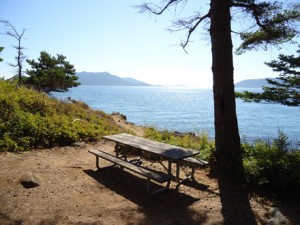
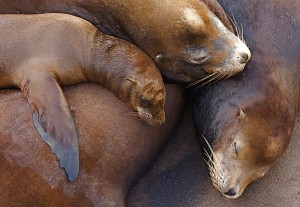
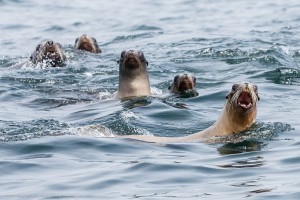

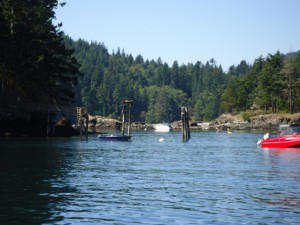
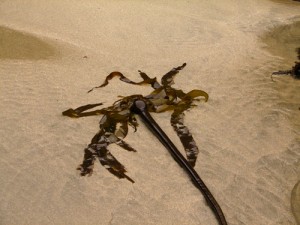
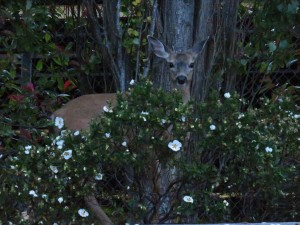
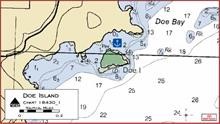
What a beautiful place and nice to know other bits of information. Thanks for sharing!
I’m glad you enjoyed my post. The Doe Bay area feels a bit more remote than the rest of Orcas Issland because most people stop at Moran State Park and go no further. I think that’s why the deer like it so much. And it’d be a much easier paddle from Doe Bay to Doe Island. Of course, you’d have to take a car on the ferry. The upside with that idea is you could tour the entire island and drop your kayak in at different places if you had enough time.